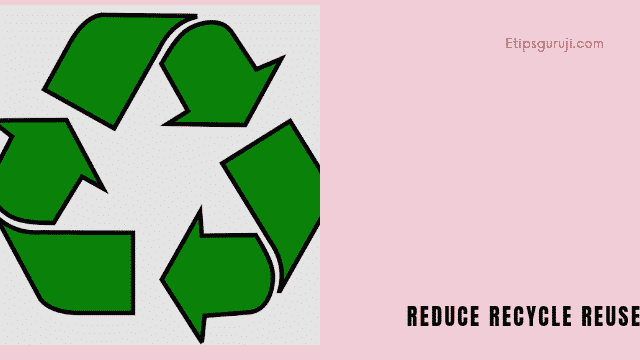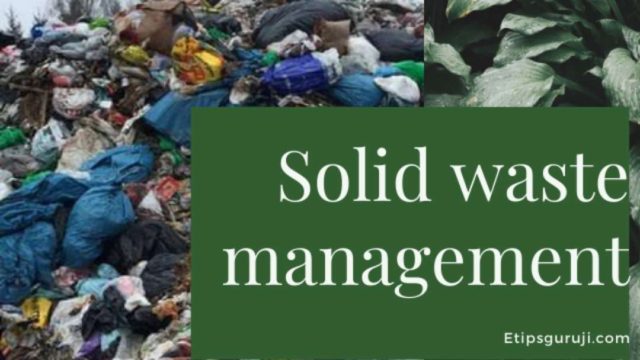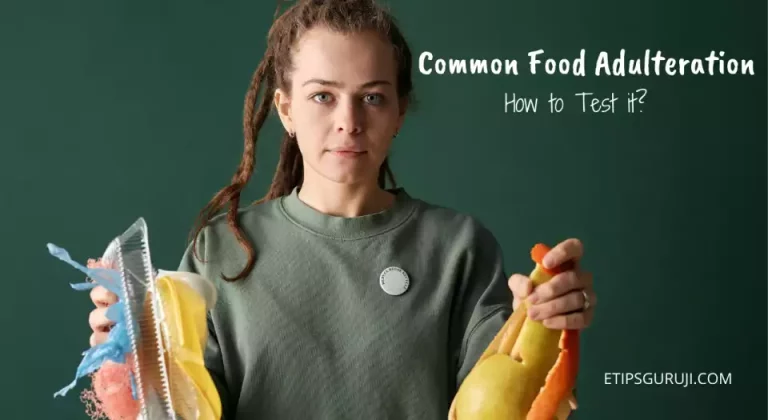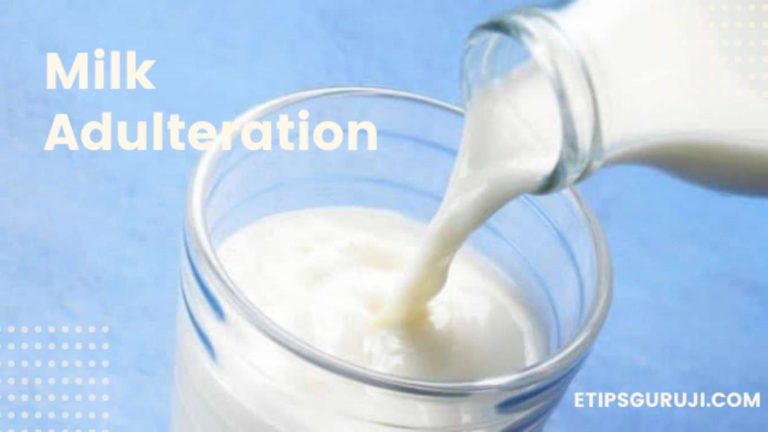Solid Waste Management Rules For A Clean Environment
Solid Waste Management Rules are important to manage the disposal of solid waste in proper manner for a clean and healthy environment
Solid waste management involves several processes like collecting, segregating, treating, and disposing of solid material that is useless and toxic. Proper solid waste management has a chain of actions and activities right from the inception to the disposal.
Each type of waste has different disposal methods depending upon its source and composition. Since waste can be in solid, liquid, or gas form, waste management practices differ from each other. The wastes are also categorized as biological, industrial, and household waste.
Why Solid Waste Disposal is Necessary?
Solid waste not only creates unsanitary conditions but also pose threat to human health. Improper waste disposal has negative environmental effects. Dispersed solid waste often blocks the drains and sewers that can result in flooding and the outbreak of vector-borne diseases.
Open solid waste dumps are home to flies, rodents, and insects. Also, the open burning of collected solid waste causes air pollution and smoke. Piles of discarded polythene bags, aerosol cans, broken glass, and healthcare wastes are not uncommon in cities.
Solid waste management is a crucial aspect of the concept -clean city green city.
Introduction to Solid Waste Management
Solid waste management can be done in many ways such as compositing, sanitary landfills, landfills, incineration & pyrolysis, and vermiculture. The concept of reducing, recycling, and reusing can minimize a considerable amount of solid waste.
Solid waste management starts with identifying the type and sources of waste. After calculating the volume of generated waste, safe collection methods are determined. The process is further carried out by using safe transportation methods and finally the safe disposal.
Overall, solid waste generation, storage, collection, transportation, and disposal are the key components of solid waste management. There are recommended interventions for various scenarios. Some scenarios require immediate action and others need short term or long term measures for solid waste disposal.
Categories of Solid Waste
The source of solid waste can be a small household unit as well as a large industry. Solid waste can be broadly classified as:
- Combustible solid waste: materials that can have a low moisture content can combust easily. Things like Wood, paper, dry leaves lie in this category.
- Non-combustible waste: items like bottles, tin cans, metal pieces, and bottles are non-combustible.
- Soiled or medical waste: this category contains hospital waste like used injections, clothes soiled with blood or bandages.
- Organic waste: organic waste mostly consists of kitchen waste, garden waste, and leftovers from vegetable or flower markets.
- Toxic waste: toxic wastes are harmful to both humans and the environment. This category includes paints, expired medicines, chemicals, bulbs, pesticide containers, spray cans, and used batteries.
- Construction waste: broken concrete, cement lumps, pebbles, dry paint, and rods are common near to any construction site.
- Dead animals: carcasses of dead animals give a foul smell and attract rodents and insects that can spread diseases.
Sources of Solid Waste
Major sources of solid waste are :
- Industrial: we all know about the advantages and disadvantages of industrialization. One of the main disadvantages of industrialization is the solid waste produced and dumped by industries. Be it a light manufacturing industry or a fabrication plant, it contributes to solid waste in the form of packaging waste, ashes, or demolition material.
- Residential waste: residential waste mainly consists of household things that are of no more use like old batteries, paper, cardboard, or old mattresses. It also includes kitchen waste in the form of leftover food or plastic packages.
- Agriculture waste: agriculture waste includes both biodegradable and non-biodegradable materials. Apart from straws and leaves, there are solid wastes like pesticide containers.
- Biomedical sources: hospitals and chemical manufacturing firms produce this kind of waste. Used gloves, syringes, papers, chemicals, and plastics are some examples of the solid wastes produced by them.
Solid Waste Disposal and Management of Garbage
When the disposal of municipal solid waste is not done properly, unsanitary conditions can lead to serious environmental issues. Solid waste management is not an easier task. It has several technical, economic, administrative, and social challenges.
Each individual, household, and business should participate in the process of Solid waste management for a clean environment. Rapid urbanization and industrialization have increased the amount of waste being dumped in water bodies.

The most common methods of solid waste disposal are :
- Open burning of solid waste. Burning of solid waste creates a noticeable amount of air pollution which is another threat to the environment.
- Incineration method: the method requires high operation and construction costs. It reduces the volume of garbage for landfills. Places, where there is no option of landfilling, the incineration method, can be applied.
- Sea dumping of solid waste: this method is very common n coastal areas. But sea dumping is not a good option. The method is costly and poses threat to the sea ecosystem and environment.
- Composting of solid waste: the method is common in developing countries. The decomposable organic matter present in the waste is separated for composting. The compost formed after the process can be used as fertilizers.
- Solid waste disposal through sanitary landfills: it is a clean and easy method. The process starts with compressing the layers of solid waste using mechanical equipment. The compressed waste is then covered with earth and leveled. the layer is compacted and a deep trench is excavated. The waste is degraded by the action of microorganisms.
- Methods like disposal by plowing into the fields, fermentation, and salvaging are also effective ion solid waste management.
Solid Waste Management Rules 2016
The solid waste management rules of 2016 were discussed by the Union Ministry of Environment, Forests & Climate Change to provide solutions for segregated waste.
Solid waste management rules 2016, covers many important things like segregation of waste, spot fines, collect back system for non-biodegradable packaging waste, guidelines for landfills, waste processing, and treatment guidelines, and involvement of ragpickers.
Solid waste management rules 2016, introduced the concept of User Fees and Spot Fines. The waste generators were asked to pay some amount to waste collectors. Since activities like collecting, processing, and disposing of waste require time and labor, paying a genuine amount is a good deal to encourage them.
Solid Waste Management Rules 2019
Solid waste management rules 2019 were made to further amend the Solid waste management rules of 2016 by the Ministry of Environment, Forest, and Climate Change. The amendment rules of 2019 were made to strengthen the implementation of environmentally sound management of hazardous waste.
Salient features of solid waste management rules, 2019 were:
- Solid plastic waste was prohibited from import into the country as well as in Special Economic Zones and Export Oriented Units.
- In case electrical and electronic components or assemblies manufactured and exported from India were found defective, they can be imported back within a year of export. Here, the permission of the Ministry of Environment, Forest, and Climate Change is not required.
- Industries not requiring consent under the Water Prevention and Control of Pollution Act, 1974, and Air Prevention and Control of Pollution Act, 1981 were benefited. They were exempted from seeking authorization under the Hazardous and Other Wastes Rules, 2016 with a condition. The hazardous and other wastes generated by such industries shall be handed over to the authorized actual users, disposal facilities, or waste collectors.
- An exemption was given to exporters of silk waste also. They were exempted to require permission from the Ministry of Environment, Forest, and Climate Change.
Solid waste disposal management is the responsibility of the government and the producers of such waste.






